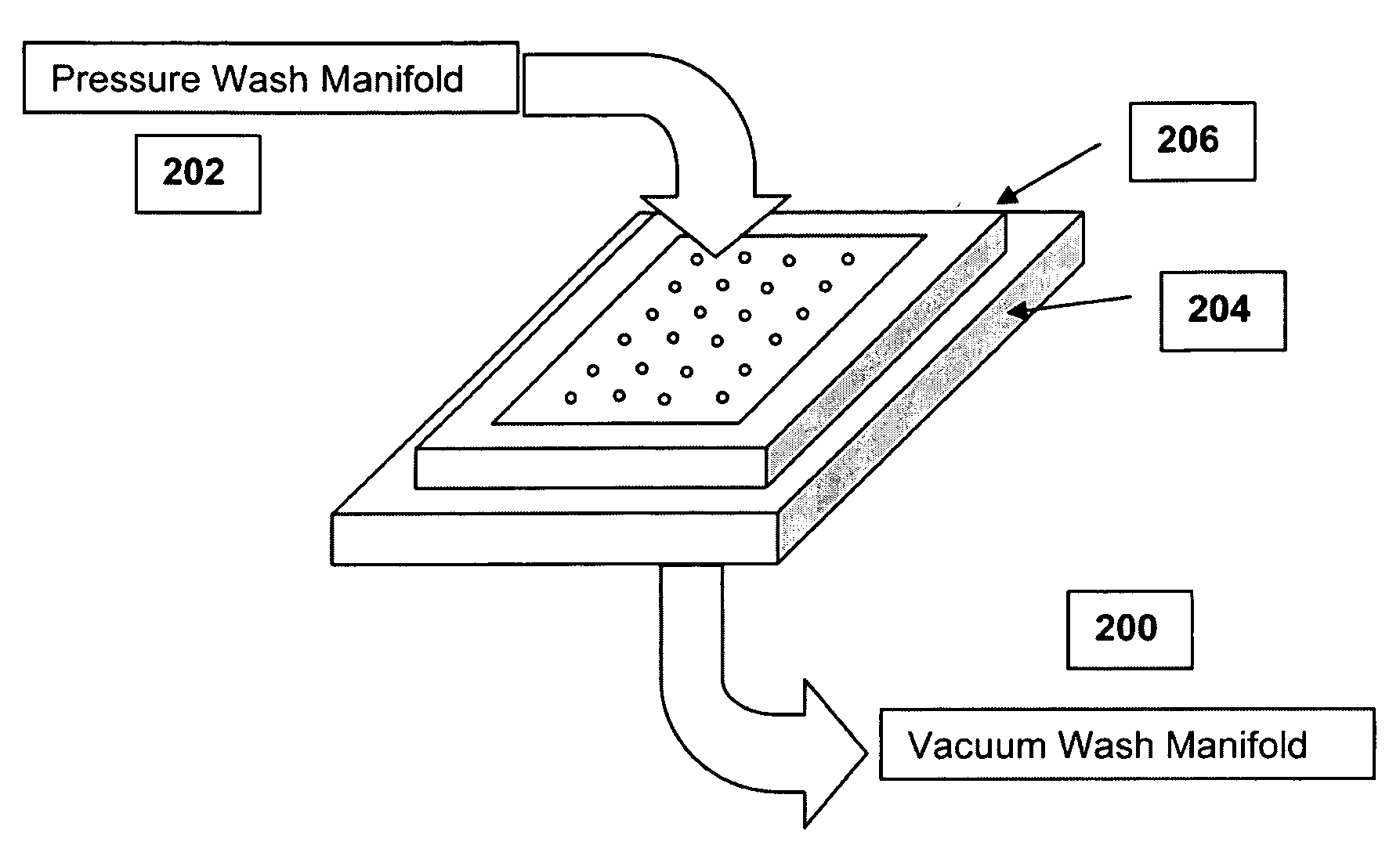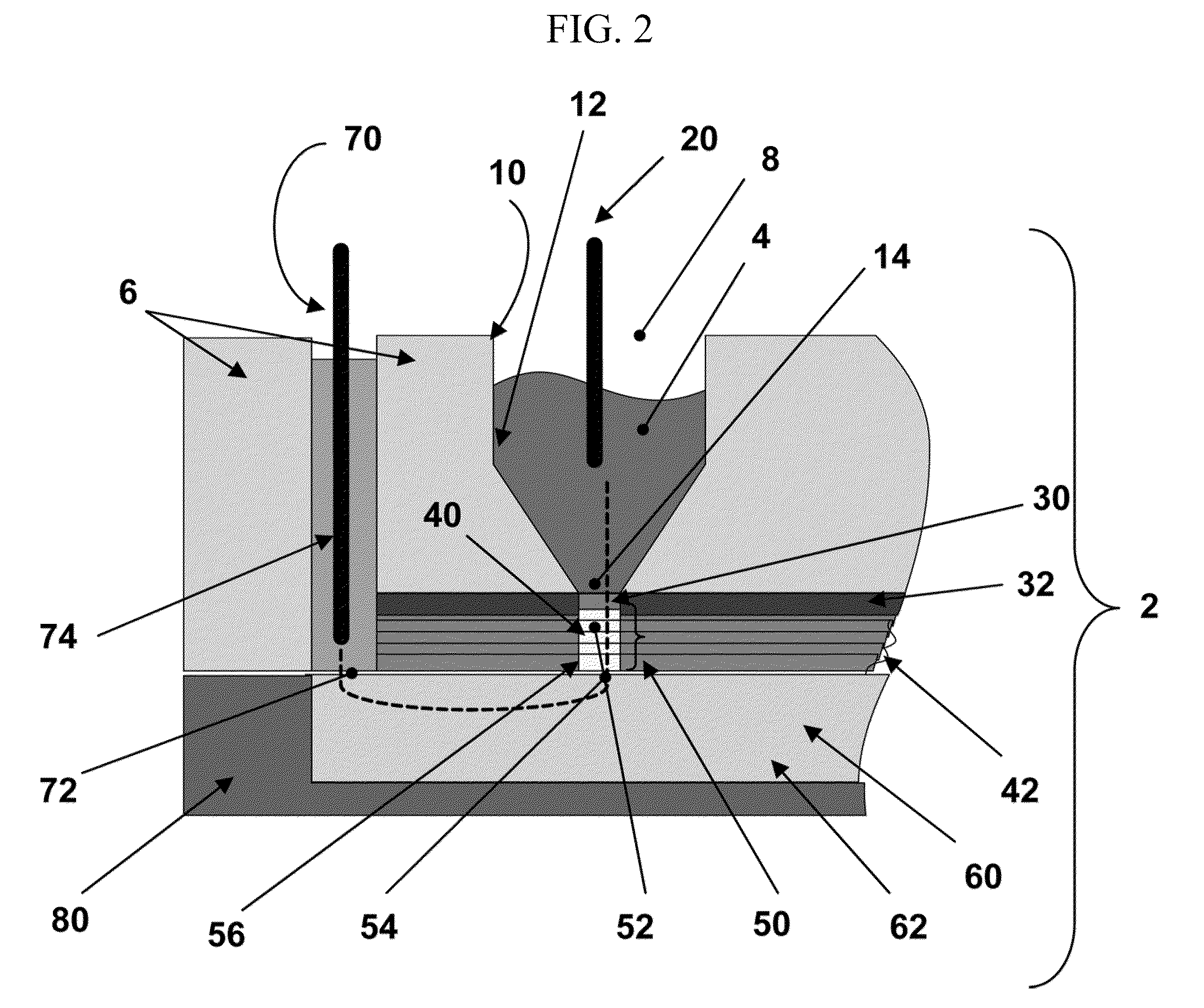Methods and Devices for Concentration and Fractionation of Analytes for Chemical Analysis Including Matrix-Assisted Laser Desorption/Ionization (MALDI) Mass Spectrometry (MS)
- Summary
- Abstract
- Description
- Claims
- Application Information
AI Technical Summary
Benefits of technology
Problems solved by technology
Method used
Image
Examples
Embodiment Construction
[0030]Incorporated in its entirety, by reference herein, is U.S. patent application Ser. No. 10 / 963,336, filed Oct. 12, 2004, which discloses methods and devices for use in the field of the invention. The methods and capture slides of this invention may be used in association with the apparatuses and methods disclosed therein. The methods and capture slides of this invention further may be used in association with the apparatuses disclosed in U.S. application Ser. No. 11 / 636,412, filed Dec. 8, 2006, which is incorporated herein in its entirety by reference.
[0031]A useful embodiment of the invention is a Peptide and Protein Analysis System (PPAS) that electrophoretically separates, concentrates and captures low abundance proteins and polypeptides present in biological samples such as serum (or from other tissues) onto a solid-phase capture slide. Following a brief rinse step, salts and other interfering molecules are washed away. Then, a MALDI matrix solution is applied to the captur...
PUM
 Login to View More
Login to View More Abstract
Description
Claims
Application Information
 Login to View More
Login to View More - R&D
- Intellectual Property
- Life Sciences
- Materials
- Tech Scout
- Unparalleled Data Quality
- Higher Quality Content
- 60% Fewer Hallucinations
Browse by: Latest US Patents, China's latest patents, Technical Efficacy Thesaurus, Application Domain, Technology Topic, Popular Technical Reports.
© 2025 PatSnap. All rights reserved.Legal|Privacy policy|Modern Slavery Act Transparency Statement|Sitemap|About US| Contact US: help@patsnap.com



